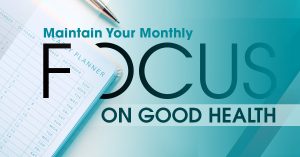In a world where we have what seems like limitless data at our fingertips, sometimes the ease of access to information can cause confusion. There are so many studies, ideas, and beliefs related to food and health you might not know the difference between what’s right and what’s right now. The idea of what a healthy diet consists of will probably continue to evolve but don’t worry, we’re here to help. Below is a list of some of the foods most commonly masquerading as nutritious along with real-life balanced tips for replacement.
- Granola – We get it, you think if you sprinkle some granola on plain yogurt, it’s almost the same as sunrise yoga sessions and you’re all about fitness. We love the good vibes but unfortunately not all granola is created equal. Many are loaded with sugar and calories and have a small serving size that few people stick to. Instead, look for a healthy cereal with more fiber than sugar content and try adding nuts so you don’t have to completely forego the satisfying crunch!
- Trail Mix – Another automatic for those looking for a quick and balanced snack to take hiking or munch on after a workout. The problem is many varieties contain candy or candied fruit that don’t really have much nutritional value. Instead, make your own! Raw nuts can be packed with heart healthy fats, certain seeds like chia, pumpkin, and sunflower are great sources of protein, and dried fruit (not rolled in sugar) has fiber, minerals, and flavor.
- Salads – You go out to eat with friends and everyone orders a salad. Sure, you don’t actually want it but everyone else got one and today you’re being healthy. After ordering, you glance longingly at the menu and lo and behold, the meal you did want actually has less calories than the salad you just ordered. What is happening?! Many salads made at restaurants are big enough for multiple people and come dripping in dressing with other additions that really take away from the whole clean eating idea; bacon bits, cheese, salted or candied nuts, or croutons. If you love salad, go for it, but maybe try to order the dressing on the side without all the extras. If you don’t actually enjoy eating salad don’t cave to the pressure, you might be better off just skipping it altogether.
- Veggie Burgers & Chips – Veggie is in the title so obviously it sounds nutritious but that isn’t always the case. Lots of veggie burgers are made with less vegetables than you might think and instead contain oils, fats, and beans or rice which hold them together. Veggie chips, though made from carrots, zucchini, or other vegetables are still often fried and salted which doesn’t make them any healthier than a traditional potato chip. Instead, if you want a veggie burger be sure to look at the ingredients to make sure you are getting what you expect. Instead of veggie chips, try fresh vegetables and dip. Fresh veggies contain the most nutrients.
- Gluten Free/ Fat Free/ Organic Foods – If you have celiac disease you should be eating gluten free foods, but if you don’t, it isn’t particularly healthier. Gluten free foods often contain added sugar and different kinds of starches which can add a significant number of calories. The same can be said of “fat free” foods. When you remove or lessen the fat content, a lot of the flavor goes with it. To make up for that, sugar or additional flavoring is added which can make it a worse choice. Organic food isn’t unhealthy, but at the same token, just because something says organic does not mean it is healthy either. Instead, read labels carefully. If you are seeing a high content of sugar, fat, salt, or calories then the item is probably making up for whatever it is free from. Also practice moderation, even if an item is listed as organic, be mindful of the recommended serving size.
Written by Maegan Carrasquillo


